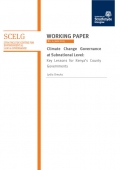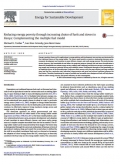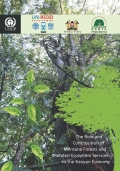Kenya
by Fred Pearce
Kenya’s high-elevation forests are the source for most of the water on which the drought-plagued nation depends. Now, after decades of government-abetted abuse of these regions, a new conservation strategy of working with local communities...
With the international community struggling to reach an agreement to maintain GHG concentration to safe levels, focus is now shifting to climate governance beyond the international and national level. Subnational governments provide such a platform for addressing climate change. The paper explores why subnational units should be on the forefront to tackle climate change, with examples from the...
Energy transition theory and its applications in energy policies and development interventions are dominated by the traditional theory of the energy ladder. The linear model predicts a positive relationship between socio-economic development and transition to more efficient, cleaner, and costly energy sources. This study demonstrates, however, that households do not follow the projected patterns...
The montane forests of Kenya, better known as Kenya’s “Water Towers”, produce direct economic value for its citizens. This value accrues not only from the production of various timber- and non-timber forest products, but also from a range of regulating ecosystem services that...
The Socio-Economic Atlas of Kenya is the first of its kind to offer high-resolution spatial depictions and analyses of data collected in the 2009 Kenya Population and Housing Census. The combination of geographic and socio-economic data enables policymakers at all levels, development...





